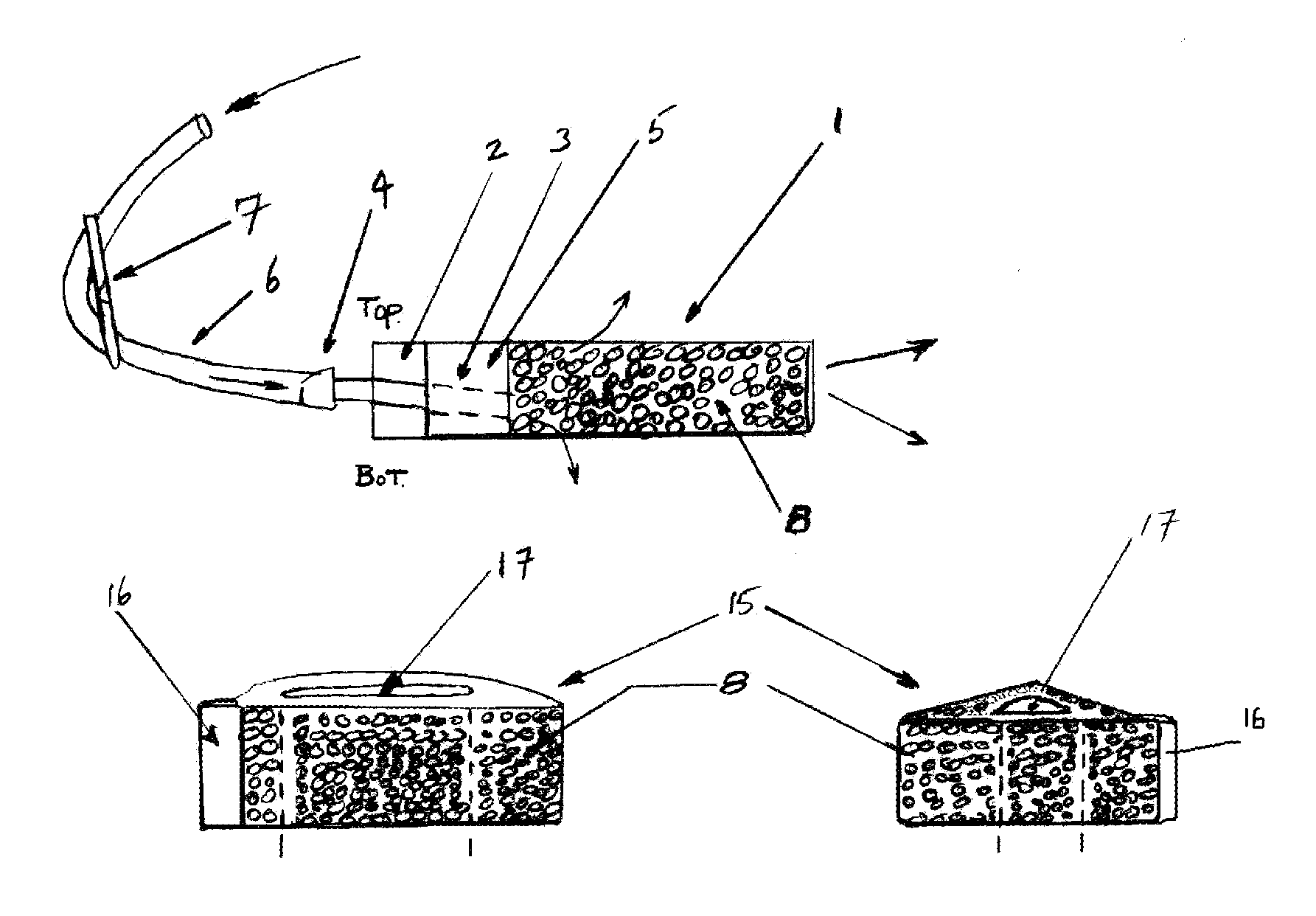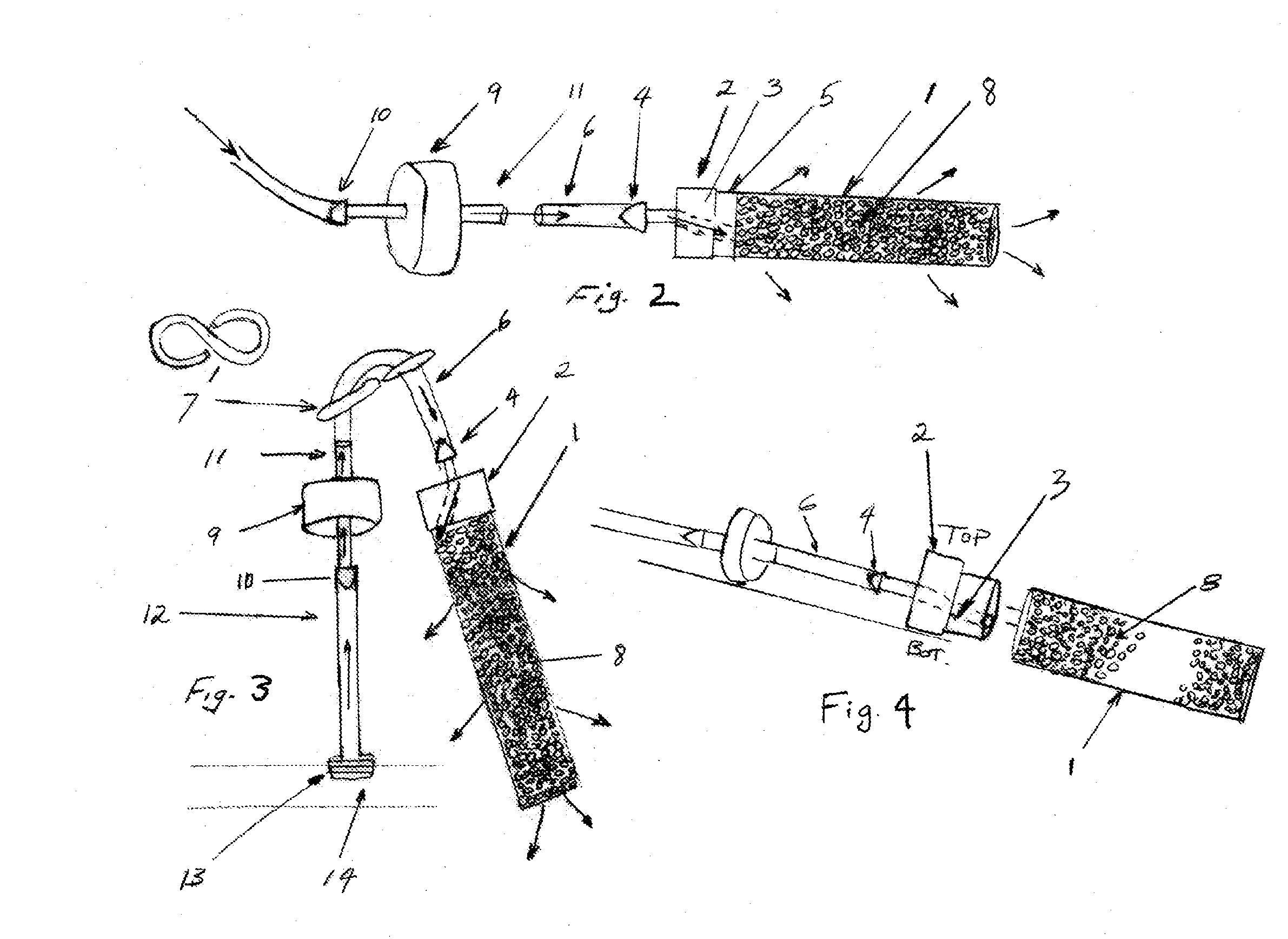Drip And Bubbler Irrigation Fertilizing System
- Summary
- Abstract
- Description
- Claims
- Application Information
AI Technical Summary
Benefits of technology
Problems solved by technology
Method used
Image
Examples
Embodiment Construction
[0018]Each of the three preferred embodiments of the drip irrigation fertilizing system are shown in FIGS. 1 thru 6 and are comprised of the following components:[0019]1. Fertilizer Pouch[0020]2. Nipple[0021]3. Nipple Canal[0022]4. Nipple Barb Tip[0023]5. Nipple Base[0024]6. Drip tubing[0025]7. S Ring Clip[0026]8. Fertilizer Pellets[0027]9. Drip Emitter[0028]10. Emitter Input Port[0029]11. Emitter Output Port[0030]12. Tubular Emitter Support Rod[0031]13. Threaded Support Base[0032]14. Irrigation Line with Threaded Opening[0033]15. Circular Fertilizer Pouch[0034]16. Flexible Pouch Seal[0035]17. Variable Pouch Diameter[0036]18. Bubbler Head[0037]19. Irrigation Pipe Riser[0038]20. Variable Rate Stake Emitter[0039]21. Emitter Support Stake[0040]22. Staked Emitter input Port
[0041]In preferred embodiment one of the present invention shown in FIG. 2, the center of the design is fertilizer pouch 1 which encloses and seals fertilizing medium comprised of small chemical pellets 8 and is attac...
PUM
 Login to View More
Login to View More Abstract
Description
Claims
Application Information
 Login to View More
Login to View More - R&D
- Intellectual Property
- Life Sciences
- Materials
- Tech Scout
- Unparalleled Data Quality
- Higher Quality Content
- 60% Fewer Hallucinations
Browse by: Latest US Patents, China's latest patents, Technical Efficacy Thesaurus, Application Domain, Technology Topic, Popular Technical Reports.
© 2025 PatSnap. All rights reserved.Legal|Privacy policy|Modern Slavery Act Transparency Statement|Sitemap|About US| Contact US: help@patsnap.com



